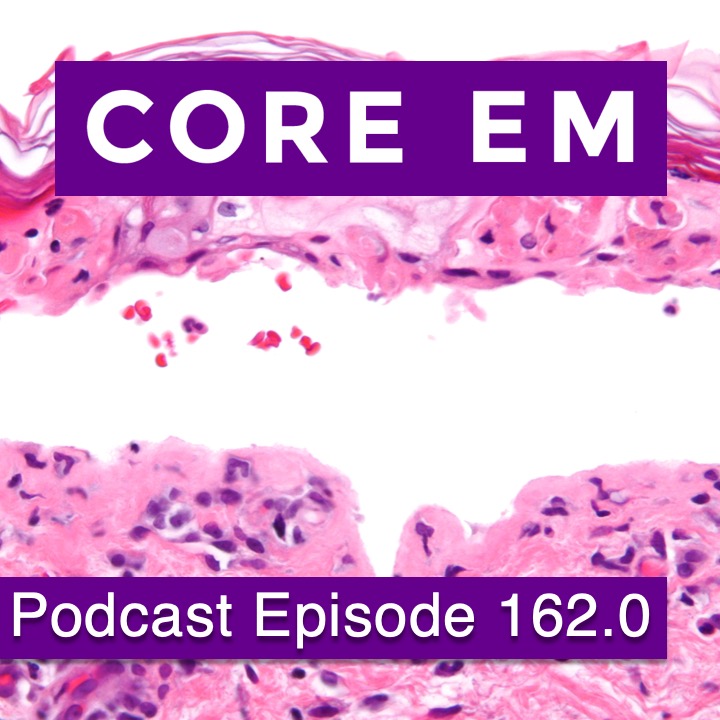Episode 162.0 – Stevens-Johnson Syndrome/Toxic Epidermal Necrolysis
Show Notes
Episode Produced by Audrey Bree Tse, MD
- Rash with dysuria should raise concern for SJS with associated urethritis
- Dysuria present in a majority of cases
- SJS is a mucocutaneous reaction caused by Type IV hypersensitivity
- Cytotoxic t-lymphocytes apoptose keratinocytes → blistering, bullae formation, and sloughing of the detached skin
- Disease spectrum
- SJS =
- TEN = >30% TBSA
- SJS/ TEN Overlap = 10-30% TBSA
- Incidence is estimated at around 9 per 1 million people in the US
- Mortality is 10% for SJS and 30-50% for TEN
- Mainly 2/2 sepsis and end organ dysfunction.
- SJS can occur even without a precipitating medication
- Infection can set it off especially in patients with risk factors including HIV, lupus, underlying malignancy, and genetic factors
- SATAN for the most common drugs
- Sulfa, Allopurinol, Tetracyclines, Anticonvulsants, and NSAIDS
- Anti-epileptics include carbamazepine, lamictal, phenobarb, and phenytoin
- Can have a curious course
- Hypersensitivity reaction can develop while taking medication, or even one to four weeks after exposure
- In pediatric population, mycoplasma pneumonia and herpes simplex have been identified as precipitating infections
- Patients often have a prodrome 1-3 days prior to the skin lesions appearing
- May complain of fever,


